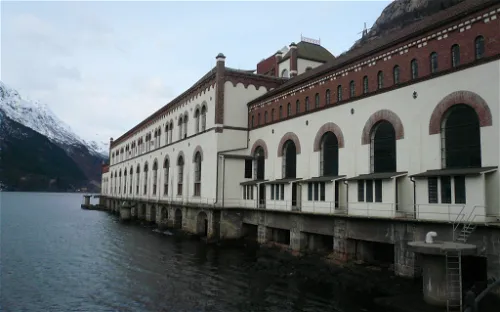Kraftmuseet and its collection
The Norwegian Museum of Hydropower and Industry, located in the village of Tyssedal in Odda, Vestland county, Norway, is a cultural history museum. It is dedicated to the industrial history of Odda and Tyssedal, and more broadly to history related to rivers and water, hydropower production, electricity, power intensive industry and its society.
The Power Station Tysso I
One of the main attractions of the museum is the power station Tysso I. This station was designed by architect Thorvald Astrup and was constructed between 1906 and 1918. It contains machinery and control room equipment from its entire period of operation, which spans from 1908 to 1989.
The Former Administration Building for AS Tyssefaldene
Adjacent to the power station is the former administration building for AS Tyssefaldene, the company that owns and operates the hydropower plant. Currently, this building is home to the museum's exhibitions, library, archives, photo and audio collections, as well as an auditorium.
Science & Technology History & Anthropology Industrial heritage


